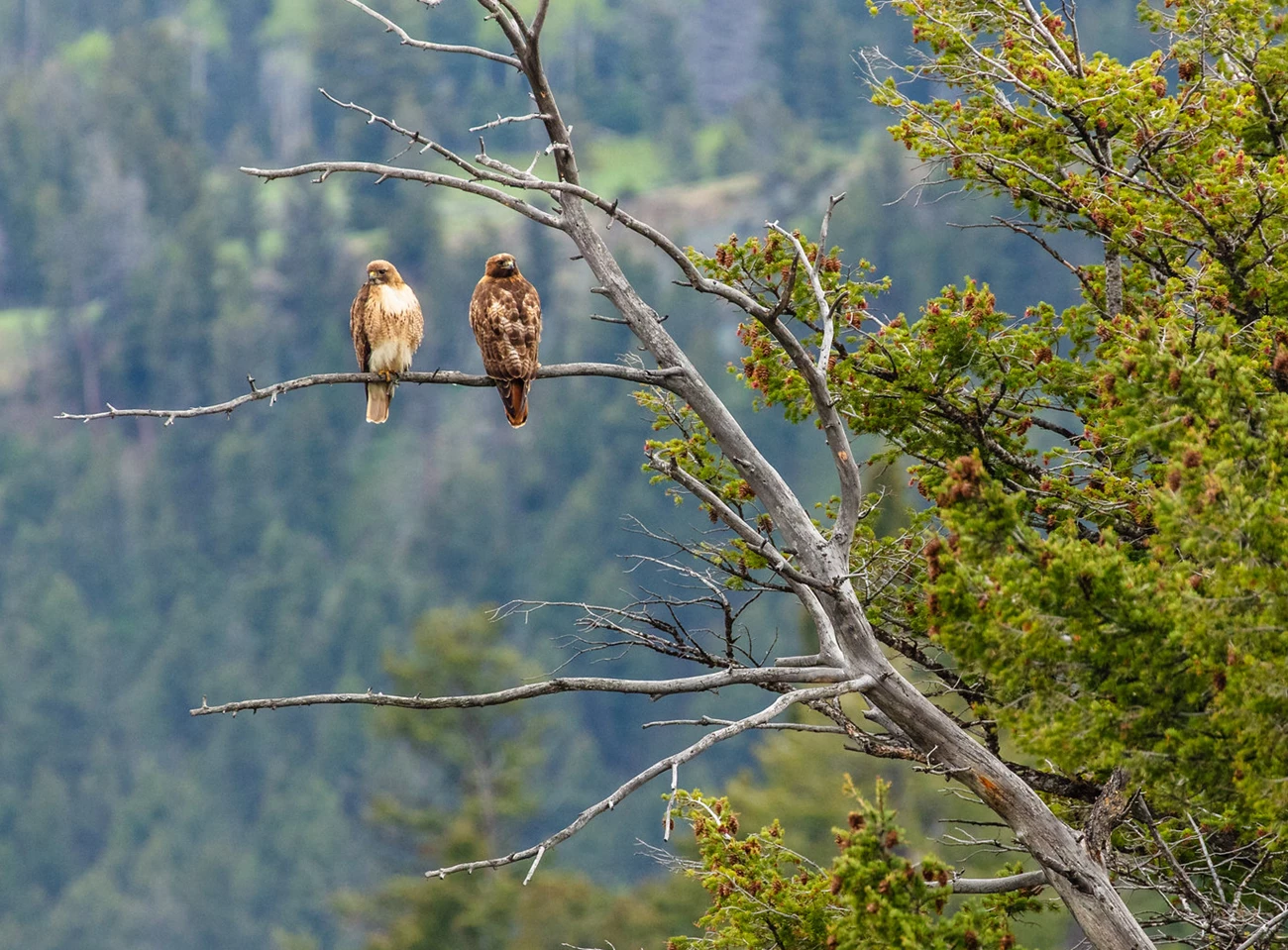Last updated: April 21, 2025
Article
Yellowstone Raptor Initiative

NPS / Jacob Frank
The Yellowstone Raptor Initiative was a five-year (2011–2015) program designed to provide baseline information for golden eagles (Aquila chrysaetos), red-tailed hawks (Buteo jamaicensis), Swainson’s hawks (Buteo swainsoni), American kestrels (swainsoni Falco), prairie falcons (sparverius Falco), and owls as focal species. In addition to surveys conducted by park biologists, the initiative relied on citizen science to acquire valuable data on raptors in the park.
Surveys located 29 pairs of golden eagles, and more likely breed within the park. Observed breeding success was low on average and is the subject of current research.
Researchers documented at least 60 red-tailed hawk territories across the northern range, with particularly high local density on the Blacktail Deer Plateau. Red-tailed hawks also exhibited variable breeding success that was, on average, much lower than the level thought necessary to maintain a stable population. Efforts to continue monitoring this species using citizen science are ongoing.
Swainson’s hawks proved a difficult species to survey in Yellowstone. Most studies have focused on their association with agricultural land, and the park is a vestige of their native environment.
At least 17 species of raptor use Hayden Valley as a migration corridor, comparable to other migration sites in the Intermountain Flyway. The Initiative provided the first look at owl distribution and occurrence in the park. Continued surveys, will improve our knowledge and understanding of this under-studied group of raptors. Finally, while not monitored during this study, accipiters are of growing conservation concern, particularly northern goshawks, and should be considered in future raptor studies.
Owls
Owl surveys continued after the completion of the Raptor Initiative in 2015, enabled by volunteers. Surveys provide an index of sites that attract advertising males of several northern forest owl species. Over the eight years of study, the greatest owl species diversity was observed in 2018, following a low in 2017. In 2018, observers detected individuals of six owl species: boreal owl (6), great horned owl (8), northern saw-whet owl (6), northern pygmy-owl (2), long-eared owl, and great gray owl (1).
For the second year in a row, a nesting pair of long-eared owls was observed in Indian Creek Campground. While long-eared owls have long been assumed to breed within the park, these are the first recorded nests by this species.
